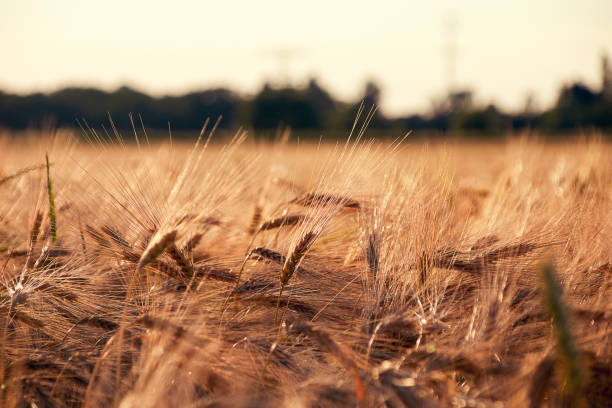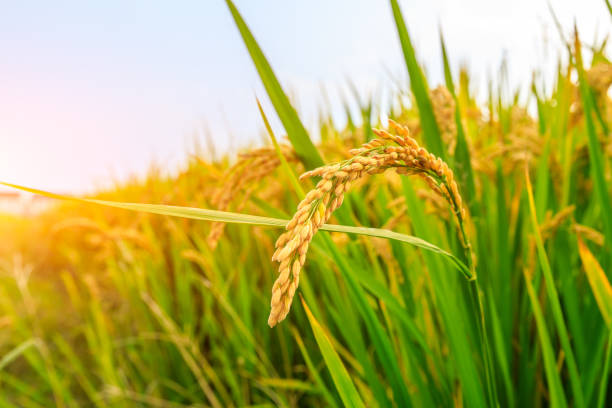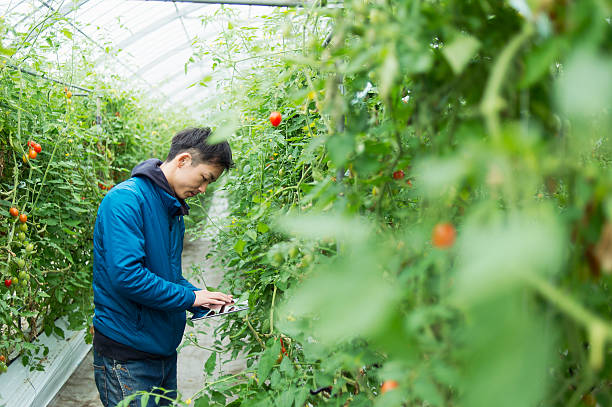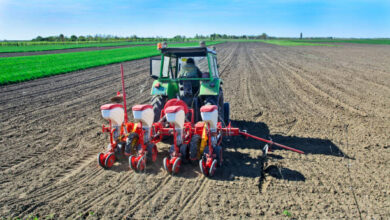Behind the Scenes of Agriculture Farm Economics: Understanding Inputs and Outputs
AGRICULTURE FARM ECONOMICS

Agriculture farm economics is an often overlooked yet vitally important topic in the modern world. It is the study of the inputs and outputs of the farming industry, and how best to maximize profits and minimize losses. To truly understand agriculture farm economics, we need to take a closer look at the various inputs and outputs that make up the system. In this blog post, we will explore the basics of agriculture farm economics, looking at the different inputs and outputs of the farming industry and discussing the various strategies that farmers can use to maximize their profits.
What is Agricultural Farm Economics?
Agricultural farm economics is the branch of economics that focuses on the study of the inputs and outputs of the farming industry. It is a field that analyzes how farmers make decisions regarding their production and management practices to maximize their profits while minimizing losses. By understanding the principles of agricultural farm economics, farmers can make informed choices that contribute to the overall success and sustainability of their operations.

At its core, agricultural farm economics involves examining the costs and benefits of different agricultural activities. This includes assessing the costs of inputs such as labor, land, seeds, fertilizers, machinery, and water, and comparing them to the value of the outputs, which are typically the agricultural products or commodities produced by the farm. By analyzing these inputs and outputs, farmers can determine the profitability of their operations and make adjustments as necessary.
One of the key concepts in agricultural farm economics is the concept of supply and demand. Understanding how supply and demand interact in the agricultural market can help farmers make informed decisions about what to produce, how much to produce, and at what price to sell their products. By considering factors such as market prices, consumer preferences, and competition, farmers can adjust their production plans to meet the needs of the market and maximize their profits.
Agricultural farm economics also takes into account various external factors that can influence farming operations. These include government policies and regulations, climate conditions, technological advancements, and global market trends. By staying informed about these external factors and incorporating them into their decision-making process, farmers can adapt and thrive in an ever-changing agricultural landscape.
In summary, agricultural farm economics is a critical field of study that helps farmers understand and navigate the complex economic aspects of their industry. By analyzing inputs, outputs, supply and demand, and external factors, farmers can make informed decisions that contribute to the success and sustainability of their operations. With a strong understanding of agricultural farm economics, farmers can optimize their production and management practices to maximize profits and minimize losses.

Understanding Inputs in Agricultural Farm Economics
In order to fully comprehend the intricacies of agricultural farm economics, it is essential to delve into the realm of inputs. Inputs are the resources, materials, and factors that are utilized in the farming industry to produce agricultural commodities. They are the building blocks of the farming process, and understanding their significance is key to maximizing profits and minimizing losses.
There are various inputs that play a vital role in agricultural farm economics. One of the most fundamental inputs is labor. The manpower required to plant, cultivate, and harvest crops is an essential component of any farming operation. Another crucial input is land, as it provides the space necessary for cultivating crops and rearing livestock. Seeds, fertilizers, machinery, and water are also critical inputs that contribute to the overall success of agricultural production.
Analyzing the costs and benefits associated with these inputs is a fundamental aspect of agricultural farm economics. Farmers must consider the expenses incurred in obtaining and utilizing these inputs, such as the cost of labor, land rental or ownership, seed purchases, fertilizers, and the use of machinery and irrigation systems. By accurately assessing the costs, farmers can make informed decisions about which inputs to prioritize and how much to invest in each.
Additionally, farmers must carefully evaluate the effectiveness and efficiency of these inputs. For instance, they must determine which seeds and fertilizers yield the best results for their specific crop and soil conditions. They must also assess the productivity and maintenance costs of their machinery to ensure they are maximizing output while minimizing expenses.
Understanding the relationship between inputs and outputs is critical in agricultural farm economics. By comprehending the costs and benefits associated with each input, farmers can make informed decisions that optimize their production processes. With this knowledge, they can allocate their resources effectively, streamline operations, and ultimately increase their profitability.
In the next section, we will explore the equally significant role of outputs in agricultural farm economics. Stay tuned to uncover the connection between inputs and outputs and how they influence the financial success of farming operations.

The Role of Outputs in Agricultural Farm Economics
As we continue to unravel the intricacies of agricultural farm economics, it is crucial to explore the equally significant role of outputs. Outputs are the end products of the farming process – the agricultural commodities that are produced and sold by farmers. Understanding the role of outputs in agricultural farm economics is essential for farmers to maximize their profits and ensure the success of their operations.
The outputs of the farming industry can vary widely, depending on the type of agricultural activity. They can include crops, livestock, dairy products, meat, poultry, fruits, vegetables, and much more. These outputs are the result of the inputs that farmers invest in their operations, such as labor, land, seeds, and machinery. The goal of agricultural farm economics is to ensure that the value of the outputs exceeds the costs of the inputs, leading to profitability.
When analyzing outputs in agricultural farm economics, farmers need to consider both the quantity and quality of their products. The quantity refers to the volume or amount of the output produced, while the quality refers to the characteristics and attributes that make the output desirable to consumers. Farmers must strive to optimize both the quantity and quality of their outputs to meet market demand and generate higher profits.
Market demand plays a crucial role in determining the success of outputs in agricultural farm economics. Farmers need to be aware of consumer preferences and trends to ensure that they are producing goods that have a high demand and will sell well in the market. This can involve conducting market research, staying up-to-date with consumer trends, and adapting production practices accordingly.
In addition to market demand, farmers also need to consider factors such as competition and pricing when determining their outputs. They need to assess the prices at which their outputs can be sold and compare them to the costs of production to determine profitability. Understanding the dynamics of the market and adjusting outputs accordingly can help farmers make informed decisions that maximize their profits.
Ultimately, the role of outputs in agricultural farm economics is to generate revenue and ensure the financial success of farming operations. By producing outputs that meet market demand, optimizing quantity and quality, and considering factors such as competition and pricing, farmers can increase their profitability and achieve long-term sustainability.
Stay tuned for the next section, where we will delve into the challenges facing agricultural farm economics and discuss strategies for overcoming them.

Challenges Facing Agricultural Farm Economics
The field of agricultural farm economics is not without its challenges. As farmers strive to maximize profits and minimize losses, they must navigate various obstacles that can significantly impact their operations. In this section, we will explore some of the key challenges facing agricultural farm economics and discuss strategies for overcoming them.
One of the main challenges in agricultural farm economics is the unpredictability of the market. Farmers often face fluctuating prices for their products, which can significantly impact their profitability. Changes in consumer demand, weather conditions, and global market trends can all contribute to price volatility. To address this challenge, farmers need to stay informed about market conditions, conduct market research, and consider diversifying their outputs to minimize the impact of price fluctuations.
Another challenge in agricultural farm economics is the increasing cost of inputs. As the prices of labor, land, seeds, fertilizers, machinery, and other inputs rise, farmers face higher production costs. This can erode their profitability, especially when coupled with market price fluctuations. To overcome this challenge, farmers can explore cost-saving strategies, such as adopting new technologies, optimizing resource utilization, and exploring alternative inputs. They can also seek government support and funding programs that help alleviate the financial burden.
Climate change is another significant challenge that farmers face in agricultural farm economics. Shifts in weather patterns, extreme weather events, and changing precipitation levels can impact crop yields, livestock production, and overall farm productivity. To adapt to the changing climate, farmers can invest in climate-resilient practices, such as crop diversification, irrigation systems, and precision agriculture. They can also implement sustainable farming methods that reduce greenhouse gas emissions and conserve natural resources.
Lastly, policy and regulatory challenges can pose obstacles to agricultural farm economics. Government policies related to trade, subsidies, environmental regulations, and land use can significantly impact farming operations. Farmers must stay informed about these policies, advocate for their interests, and actively engage with policymakers to ensure their voices are heard.

Best Practices for Successful Agricultural Farm Economics
To achieve successful agricultural farm economics, farmers need to implement a range of best practices. These practices are essential for maximizing profits, ensuring sustainability, and overcoming the challenges that arise in the industry.
- Conduct thorough financial analysis: It’s crucial for farmers to have a comprehensive understanding of their costs and revenues. By conducting detailed financial analyses, farmers can identify areas where they can cut costs or improve efficiency, ultimately increasing their profitability.
- Embrace technology: Technology plays a vital role in modern agricultural farm economics. Farmers should embrace technologies such as precision agriculture, automation, and data analytics to optimize their production processes, minimize waste, and improve decision-making.
- Practice sustainable farming: Sustainable farming practices not only benefit the environment but also contribute to long-term economic success. Farmers should adopt methods that conserve natural resources, reduce waste, and minimize environmental impact. This can include practices like crop rotation, integrated pest management, and water conservation techniques.
- Diversify outputs: Relying solely on one type of agricultural output can be risky, as market conditions can change rapidly. Farmers should consider diversifying their outputs by producing multiple crops, raising different livestock, or exploring niche markets. This helps to spread risks and increases the potential for profitability.
- Stay informed and adapt: The agricultural industry is constantly evolving, with new technologies, market trends, and policy changes emerging regularly. Farmers should actively stay informed about these changes and adapt their strategies accordingly. This can involve attending industry conferences, participating in training programs, and networking with other farmers and experts.
- Build strong relationships: Collaboration and networking are vital for success in agricultural farm economics. Building relationships with suppliers, buyers, industry experts, and other farmers can provide valuable support, information, and opportunities. These relationships can lead to cost savings, market access, and new business ventures.
By implementing these best practices, farmers can navigate the complexities of agricultural farm economics and position themselves for long-term success. With a focus on financial analysis, embracing technology, practicing sustainability, diversifying outputs, staying informed, and building strong relationships, farmers can optimize their operations and thrive in the ever-changing agricultural landscape.






Hi there, You’ve done an incredible job. I’ll certainly digg it and in my view suggest to my friends. I am sure they’ll be benefited from this site.
Good write-up, I?¦m normal visitor of one?¦s website, maintain up the excellent operate, and It is going to be a regular visitor for a long time.
I like your writing style truly enjoying this web site.
WONDERFUL Post.thanks for share..extra wait .. …
Just a smiling visitant here to share the love (:, btw outstanding pattern. “Individuals may form communities, but it is institutions alone that can create a nation.” by Benjamin Disraeli.
I was looking at some of your content on this site and I think this website is rattling informative ! Keep on putting up.
I love it when people come together and share opinions, great blog, keep it up.
I have fun with, cause I found exactly what I was having a look for. You have ended my 4 day long hunt! God Bless you man. Have a nice day. Bye
WONDERFUL Post.thanks for share..extra wait .. …
What is ProNerve 6? ProNerve 6 is your complete arrangement made to address the multifaceted necessities of nerve wellbeing
I have been exploring for a bit for any high-quality articles or weblog posts in this sort of space . Exploring in Yahoo I finally stumbled upon this web site. Studying this info So i¦m glad to convey that I have a very good uncanny feeling I found out exactly what I needed. I most unquestionably will make sure to don¦t overlook this web site and give it a glance on a relentless basis.
Greetings from Florida! I’m bored to tears at work so I decided to browse your website on my iphone during lunch break. I enjoy the knowledge you present here and can’t wait to take a look when I get home. I’m shocked at how quick your blog loaded on my mobile .. I’m not even using WIFI, just 3G .. Anyhow, fantastic site!
Sweet website , super design and style, rattling clean and utilize pleasant.
I don’t usually comment but I gotta say thanks for the post on this special one : D.
I view something truly interesting about your web blog so I bookmarked.